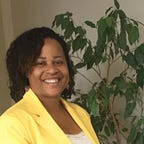Combatting the October Educator Blues
October is a rough month for educators. The days are getting shorter, the weather cooler, and the breaks become further spaced out. October has long been the month that educators can start to feel down. Luckily, educators already have the most important tool to fight the October blues — health insurance. New innovations in access to therapy and the rise in awareness of mental health create a more accepting context for educators experiencing mental health challenges. Educators need not worry that documentation from accessing mental health services will create negative perceptions of their competency.
After all, educators have complex family lives, can struggle with ADHD, and have a difference in ability. Educators are susceptible to the same mental health challenges that impact students. According to national data, teachers are experiencing increased stress and anxiety — factors that can lead to depression. Counseling provides a space wherein educators can discuss their realities as well as envision and practice new ways of being and living. Given that schools should be more than just places of academic achievement and help students learn and enact healthy living practices, it is essential to have mentally healthy educators who are able to create positive socio-emotional learning environments.
As a teacher educator and coach, I discuss the October blues with educators. Together we create a map of how the energy from the beginning of the year begins to wane as the daily interactions with students, families, and colleagues weigh us down. The discussion becomes an aha moment for many of them as they detail the shifts they have experienced in their own, colleagues, or cooperating teacher’s demeanor. When I suggest that a key resource to combat the October blues is counseling, a silence sets in the discussion. I fill in the silence by sharing my own story with accessing counseling.
As a student, I struggled with coping with the dysfunction of my home life. As a freshman in high school, I began to dream of committing suicide. My English teacher recommended me to a youth self-help group. There I learned language to describe my feelings and experiences and new ways to cope with both. This knowledge carried me through much of my 20s; however, when I hit my 30s a deep depression set in. Outwardly, I was at the height of my professional career. I had just completed my dissertation and joined a small population of Black women with a doctorate. Seemingly not was wrong: I went to work, taught my classes, spoke to colleagues. However, at home I pondered ways to say goodbye to life. As a scholar, I even went as far as to research the suicide rates, contexts, and indicators of suicide for Black women — I had 6 of the 8 indicators. In a moment of self-preservation, I sent a text to a friend and fellow educator. Together we talked through steps that could get me back into counseling.
Having experienced lackluster marriage counseling, I knew that the power of counseling lies in the right fit. I interviewed three counselors to find the right person. A white, older male turned out to be the best fit for my counseling goals and lived experiences. For the next three years I went to counseling once a week. As each session progressed, my ability to gauge and manage my reactions to events outside of my control increased. I had come to recognize how my teaching contexts mirrored the most challenging aspects of my childhood and familial relationships. I was able to use this information to renegotiate my job and have courageous conversations with friends and family. The tensions that I used to carry at work — even those that I thought I masked well — decreased. My compassion for others increased.
The three years of counseling would not have been affordable without my health benefits. For each session I paid a $40 co-pay. While still a significant amount ($40 won’t even fill up a gas tank these days) the cost was less than 25% of the weekly session fee charged by my therapist. I also learned to use another health benefit — a Health Savings Account (HSA), which allowed me to deduct the monthly cost of counseling from my check pre-taxes. After each month, I would use the HSA to reimburse myself. The process was a simple online form, and the reimbursement was deposited directly into my checking account.
It has been ten years since the day I texted my friend and colleague. Today, I leverage the learning from the three years of counseling to manage the October blues. Like many other educators, this time of the month can begin to weigh on me. To combat the blues, I draw up my list of activities that help me treat myself well — a concept similar to self-care that also acknowledges that the stressors I feel may not go away. Instead, the goal is to ensure that each day I make decisions that place my mental and emotional health at the center.
A goal every educator deserves.
If you are in need of counseling or need someone to speak these resources can help:
National Suicide Hotline: dial 988 or text HELLO to 741741 or call 1–800–273-TALK (8255)
National Queer and Trans Therapists of Color
